|
|
|
| |
| ABSTRACT |
|
To determine how lateral shuffling/lateral shuffle (LS) -induced fatigue affects ankle proprioception and countermovement jump (CMJ) performance. Eighteen male college athletes performed 6 modes of a repeated LS protocol with 2 distances (2.5 and 5 m) and 3 speeds (1.6, 1.8, and 2.0 m/s). After LS, ankle inversion proprioception (AIP) was measured using the active movement extent discrimination apparatus (AMEDA). CMJ, blood lactate (BLa), heart rate (HR) and rating of perceived exertion (RPE) were measured before and after LS. The number of changes of direction (CODs) in each protocol was recorded. LS-induced fatigue was evident in BLa, HR and RPE (all p < 0.05), increasing with shorter shuffle distance and faster speed. RM-ANOVA showed a significant distance main effect on both AIP (p < 0.01) and CMJ (p < 0.05), but the speed main effect was only significant for CMJ (p ≤ 0.001), not AIP (p = 0.87). CMJ performance was correlated with BLa, HR and RPE (r values range from –0.62 to -0.32, all p ≤ 0.001). AIP was only correlated with CODs (r = -0.251, p < 0.01). These results suggested that in LS, shorter distance, regardless of speed, was associated with worse AIP, whereas subsequent CMJ performance was affected by both LS distance and speed. Hence, AIP performance was not related to physiological fatigue, but CMJ performance was. Results imply that LS affects processing proprioceptive input and producing muscular output differently, and that these two aspects of neuromuscular control are affected by physiological fatigue to varying degrees. These findings have implications for injury prevention and performance enhancement. |
| Key words:
Proprioception, fatigue, injury, performance
|
Key
Points
- Repeated lateral shuffle with shorter distance, regardless of speed, was associated with worse ankle inversion proprioceptive acuity.
- Similar movements with varying modes seem to affect processing of proprioceptive input and muscular output differently.
- Ankle inversion proprioceptive acuity was not related to physiological fatigue, but countermovement jump performance was fatigue-affected.
|
The lateral shuffle (LS), in which requires athletes to shuffle quickly to move laterally over short distances, change direction, and perform high-intensity start-stop actions, is a common movement pattern in sport activities (Subramanium et al., 2021). A previous study demonstrated that soccer players engage in LS for approximately 3.9-4.5% of total game time, while basketball players engage in LS for approximately 18.1-42.1% of game duration, highlighting the importance of LS in these games (Taylor et al., 2017). In addition, studies have noted more than 300 instances of LS occuring in a single basketball game, and each high-intensity LS may cover distances ranging from 2.28 to 4.24 meters (Scanlan et al., 2011; Taylor et al., 2017). During LS, athletes need to effectively control their center of gravity with varying shuffle speed and distance, so as to cope with different situations in the field (Wu et al., 2022). The intense LS associated with a high number of CODs usually causes varying degrees of fatigue in athletes, which may affect their neuromuscular control, resulting in increased injury risk and impaired sports performance (Taylor et al., 2017). Fatigue is a multifaceted phenomenon, encompassing a decline in muscular force and a reduction in physiological and psychological function (Bestwick-Stevenson et al., 2022). Understanding of the mechanism of fatigue and its effects on neuromuscular control, including processing proprioceptive input and making muscular output, has important implications for successful injury prevention and sport performance enhancement (Thorpe et al., 2017). Some previous research has investigated the effects of fatigue on lower limb proprioception (Voight et al., 1996; Miura et al., 2004; Ribeiro et al., 2011), however, the findings are not consistent. For instance, Ribeiro et al., found knee joint proprioception was significantly decreased after volleyball game-induced fatigue (Ribeiro et al., 2008). Mohammadi and Roozdar et al., similarly found that evertor fatigue caused a decline in ankle proprioception in soccer players (Mohammadi and Roozdar, 2010). In contrast, Chang and colleagues’ reported that neither knee or ankle proprioception were affected by treadmill running-induced fatigue in half marathon runners (Chang et al., 2022b). There are some possible reasons for these inconsistent findings. Notably, the fatigue protocols used in different studies have varied. Specifically, some employed a relatively uncontrolled fatiguing protocol, such as a game or match (Clarke et al., 2015); while others used more controlled protocols, such as muscle isometric contraction, or treadmill running to a certain distance (Chang et al., 2022a). Second, the level of fatigue was controlled differently. Some studies used subjective measures, such as rating of perceived exertion (RPE) (Thorpe et al., 2015), while others used more objective markers, such as blood lactate (BLa) (Chang et al., 2022b). Further, the differing demands of different sports may serve as a reason. For example, volleyball players often engage in multiple jumps during matches, which could be a contributing factor to decreased proprioception in the knee joint (Ribeiro et al., 2008). More importantly, the proprioception assessment methods employed have varied between studies (Han et al., 2016). For measuring proprioception, threshold to detection of passive motion, joint position reproduction, and active movement extent discrimination assessment (AMEDA) are commonly used (Han et al., 2016). The first two methods require participants to be placed on an isokinetic dynamometer system to sense the applied ankle position, with vision and audition blocked (Han et al., 2016). However, these methods have been criticized for their limited ecological validity (Han et al., 2016). By contrast, the AMEDA has become a more widely used assessment for sports performance due to its ease of use and greater similarity to normal movements, or ecological validity. It produces scores that have been found to be sensitive to injuries at the ankle that affect active proprioception (Han et al., 2014). Evidence has suggested that the results from these different testing methods are not correlated (Han et al., 2016), implying that the neurophysiological process underlying these proprioceptive tests may be distinct. Therefore, in order to better understand the effect of fatigue on proprioceptive ability, the testing method selected should be the most sensitive one available. In terms of the effect of fatigue on muscular output, neuromuscular indicators such as maximal voluntary contraction force, peak power, vertical jump performance, and action speed have all been found to be significantly decreased after fatigue (Raeder et al., 2016). The countermovement jump (CMJ), a fundamental movement in a wide range of sports (Gathercole et al., 2015; Alba-Jiménez et al., 2022), has often been used as a way of detecting neuromuscular output function, due to its straightforward and rapid testing process, and high practicality (Thorpe et al., 2017). However, the effect of fatigue caused by different modes of exercise on CMJ is not well understood. LS involves a continuous engagement of the lower limb muscles in the stretch-shortening cycle (SSC) (Nicol et al., 2006). Studies indicate that SSC movements could induce neuromuscular fatigue (NMF) (Wadden et al., 2012), as characterized by a reduction in maximal voluntary contraction force or an inability to generate an expected force or power (Gandevia, 2001; Boyas and Guével, 2011; Place and Millet, 2020). In several team and racket sports, the amount of changes of direction, cutting, and shuffling can cause severe NMF in athletes (Thorpe et al., 2017; Alba-Jiménez et al., 2022), potentially elevating injury risk, particularly to the ankle joint (Herbaut and Delannoy, 2020). Currently, there is little research exploring the effects of LS-induced fatigue on neuromuscular control, including both the processing of proprioceptive input and muscular output aspects. Although LS can vary in both speed and distance with the movement control requirements in different sports, how these two factors in combination affect neuromuscular control is largely unknown. Accordingly, the current study included LS-induced fatigue protocols using different distances and speeds. The primary objectives of this study were 1) to assess the impact of LS-induced fatigue at varying speeds and distances on AIP and CMJ; and 2) to explore the relationships between fatigue and AIP, and fatigue and CMJ performance. We hypothesized that 1) both AIP and CMJ performance would significantly decrease with LS-induced fatigue, regardless of distance and speed conditions; and 2) both AIP and CMJ performance would be correlated with degree of LS-induced fatigue. ParticipantsEighteen young male college athletes (age 21.3 ± 1.8 yrs, body mass 72.8 ± 8.5 kg, height 177.4 ± 5.8 cm, mean ± SD) participated. They included six basketball, six soccer and six tennis players, as previous research has shown that LS is a common way of moving in these sports (Kovacs, 2009; Taylor et al., 2017). Inclusion criteria were as follows: 1) to have maintained regular training at least three times per week over the past four weeks; 2) to be in good health and not have had any lower limb injuries in the past six months; 3) to have agreed to do the tests for the experiment and signed the informed consent. All participants provided the informed consent documents before the formal test and indicated that they understood the whole test protocol. Research Ethics approval number: 102772023RT104.
ProceduresConsidering that the practical distances used in LS, and the subtle variations in speed within LS that may lead to a higher level of difficulty, six distinct lateral movement (LS) modes were used, characterized by three different speeds, at two distances (5m, 2.0m/s; 5m, 1.8 m/s; 5m, 1.6 m/s; 2.5m, 2.0 m/s; 2.5m, 1.8 m/s; 2.5m 1.6 m/s). To induce fatigue, each mode lasted for 3 minutes. The LS mode was randomly assigned, and to ensure that participants received adequate rest and to avoid learning effects, there was a minimum of 48 hours between each test session. The formal test was conducted on a plastic track in an indoor field. Fatigue indicators were blood lactate (BLa), heart rate (HR) and rating of perceived exertion (RPE). Neuromuscular performance was assessed by the CMJ. AIP was assessed with the AMEDA, and tested after LS. Before the test, there was a 10-minute standardized warm-up, including jogging, dynamic stretching, and three submaximal CMJs. HR was monitored throughout LS. BLa, CMJ and RPE were measured before and after the exercise. The protocol included three speeds at two distances. Participants modulated their movement speed based on audio prompts and engaged in repeated horizontal movements between two lines (Figure 1). They were required to move when the audio signal sounded, ensuring that their body center reached one of the two lines. The prescribed action involves maintaining a stance where both feet align with the shoulders, with the knees flexed approximately 60° (Wu et al., 2022). Throughout, testers reminded the participants to sustain this angle of their knee joints. If participants failed to perform the LS according to the protocol for more than three consecutive times, the test was to be invalidated. To induce fatigue, the exercise duration was set at 3 minutes. Given the constrained pace and duration at each LS distance, longer distances in LS involved more shuffles and fewer CODs, while faster speeds result in a higher frequency of CODs. For example, the COD frequencies in 2.5m LS modes are twice those in 5m LS modes when the speed is the same. The number of CODs in the different lateral movement conditions are as follows: 57 (5m, 1.6 m/s), 64 (5m, 1.8 m/s), 72 (5m, 2.0m/s), 115 (2.5m 1.6 m/s), 129 (2.5m, 1.8 m/s) and 144 (2.5m, 2.0 m/s). A capillary blood sample was collected from the participant’s earlobe both before and after LS, and BLa was analyzed with an EKF lactate analyzer (Biosen S_line, EKF Diagnostic, Magdeburg, Germany). HR was monitored throughout the LS process (Polar H9, Polar Electro, Kempele, Finland). Perception of fatigue was evaluated by the reported RPE (according to Borg’s 6-20 scale) (Gao et al., 2022), using numbers to represent the level of fatigue. RPE was requested and recorded both before and after the LS. The average height of CMJs was used to evaluate NMF. A meta-analysis of 151 studies on CMJ as a means of detecting NMF found that using the average height of CMJ (ES = 0.74) as a fatigue indicator was more sensitive than using the greatest height (ES = 0.33) (Claudino et al., 2017). CMJ was measured using a phone app (MY JUMP2) which has been proven as a reliable tool when used to measure vertical jump performance [r = 0.99; ICC = 0.99] (Balsalobre-Fernández et al., 2015). In the 10-minute warm-up, participants performed 3 maximal CMJs with 30 seconds rest between efforts both before and immediately after LS (Clarke et al., 2015). The loss of average height of CMJs between the pre-test and post-test (CMJloss) was used in the analysis. The AMEDA was used for assessing ankle proprioception in a free-standing, weightbearing position. Previous studies have shown that the proprioception ability of the dominant side is poorer, so only the dominant foot (Waterloo Footedness Questionnaire) was tested (Yang et al., 2018). A stationary platform and a movable testing platform comprise the AMEDA. The movable testing platform is equipped with a board that can rotate along the central axis of the foot and generate an inclined angle, with four possible angle positions (position 1 = 10Ëš, position 2 = 12Ëš, position 3 = 14Ëš, position 4 = 16Ëš). Participants perform an inversion movement with the test foot, determine the inversion depth after reaching the test position, report the appropriate number, and return to the starting position (Figure 2). During the formal testing process, participants were required to stand barefoot on the platform and look straight ahead. The middle toe of the test foot was aligned with the axis of the movable testing platform to determine the position of the ankle joint. Prior to the formal testing, participants were shown the four inversion positions of the ankle joint, for a total of three rounds. Subsequently, during the test, the four inversion positions were randomly presented to participants, with each position being judged 10 times. No feedback as to the correctness of judgments was provided.
Statistical analysisThe descriptive data are presented as mean ± standard deviation (SD). Normality of the data distribution and homogeneity of variance were assessed using the Shapiro-Wilk and Levene methods, respectively. The area under the receiver operating curve (AUC) was used to determine AIP. The mean of 3 pair-wise AUC scores was calculated for the total score, which represents ability to discriminate between adjacent positions on the test. AUC values can range from 0.5 (chance responding) to 1.0 (perfect discrimination). Repeated Measures Analysis of Variance (RM-ANOVA) was conducted to compare the effects of varying distances (2.5m and 5m) and speeds (1.6, 1.8, and 2.0m/s) and sports (basketball, soccer, and tennis) on ankle proprioception scores. Partial Eta Squared () was calculated as the effect size index. Pearson correlation analysis was employed to examine the relationship between HR, BLa, CMJloss, RPE, and AIP. The magnitude of the correlation between test indicators was categorized as follows: ≤ 0.1 (trivial); 0.1-0.3 (small); 0.3-0.5 (moderate); 0.5-0.7 (large); 0.7-0.9 (very large) and 0.9-1.0 (almost perfect). The paired sample t-test was used to compare the AUC score measured between 5m and 2.5m distance at different speeds. Statistical significance was set at p < 0.05. All statistical analyses were conducted using IBM SPSS software version 26.0 (IBM, Armonk, New York, USA).
The data revealed a relative increase in BLa, HR, and RPE with escalating speed, indicating evident physiological and perceived fatigue. CMJloss demonstrated that all LS protocols induced NMF (Figure 3). NMF became progressively more severe with increasing speed, and the 2.5m protocol induced more pronounced NMF than the 5m protocol at the same speed. Paired t-test results indicated no significant difference in ankle proprioception after LS at the 5m or 2.5m distances, at any speed (all p > 0.05). RM-ANOVA showed a significant distance main effect for acuity of ankle proprioception (F = 7.351, p < 0.01, = 0.178) and CMJloss (F = 5.265, p < 0.05, = 0.134). There was a significant speed main effect for BLa (F = 23.109, p ≤ 0.001, = 0.405), HR (F = 4.575, p < 0.05, = 0.119), CMJloss (F = 5.265, p ≤ 0.001, = 0.273), and RPE (F = 8.426, p ≤ 0.001, = 0.199), with no interaction effect between distance and speed for all indicators (all p > 0.05). Sports was not a factor associated with significant differences in ankle proprioception (all p > 0.05). Pearson correlation analysis showed that BLa, HR, CMJloss, RPE, and CODs were significantly correlated with each other (all p < 0.05). AIP was not correlated with HR, BLa, CMJloss, and RPE (all p > 0.05), but AIP was negatively correlated with number of CODs (r = -0.251, p < 0.01). The findings of the current research suggest that lateral shuffle-induced fatigue affects ankle proprioception and CMJ performance to varying degrees depending on shuffling speed and distance. Specifically, acuity of ankle proprioception was only affected by LS distance, not speed, while CMJ performance was affected by both distance and speed. Therefore, our initial hypotheses have been partially supported by the results. From Figure 3 it is clear that all LS protocols successfully induced fatigue, as indicated by the rising trend with higher speeds for all fatigue-related indicators. However, the ankle proprioceptive AUC scores did not change correspondingly with changes in speed during LS at the same distance. In addition, the AUC score was not correlated with any fatigue indicator. This lack of correlation between BLa, HR, and RPE and the AUC proprioceptive acuity score is consistent with findings by Chang et al., (Chang et al., 2022b). They found that despite the presence of noticeable fatigue after segmented long-distance running, proprioceptive AUC scores did not correspondingly decrease and even exhibited a slight increase. This suggests that the relationship between fatigue and proprioception may be influenced by factors such as training history and the adaptability of the nervous system (Chang et al., 2022b). In addition, we did not find any differences in ankle proprioceptive acuity among participants across different sports. This was consistent with previous research findings (Han et al., 2015), which showed that there was a correlation between ankle proprioception and different competition levels, but indicated there was no significant difference in ankle proprioception among athletes from different sports. A novel finding from the current study is that diminished ankle proprioception was significantly correlated with the number of CODs in each LS protocol, which may be related to fatigue of specific muscles associated with CODs. The preliminary function of the peroneus longus muscle is to evert the ankle, and it plays an important role in maintaining ankle stability in the process of LS (Otis et al., 2004). Increased CODs mean more inversion movements of the ankle joint, which may lead to fatigue in the peroneus longus muscle. This argument is supported by the evidence that isometric muscle contraction-induced fatigue can impair ankle proprioception (Mohammadi and Roozdar, 2010). Therefore, our results, together with previous research, suggest that ankle proprioceptive acuity may not be affected by physiological fatigue, but can be negatively affected by repeated ankle inversion movement control, causing peroneus longus muscle fatigue. This finding highlights the importance of peroneus longus muscle strengthening in ankle proprioception (Han et al., 2022) and has implications for ankle sprain prevention in sport. In particular, more than 300 lateral movements in one basketball game have been reported (Taylor et al., 2017), partially explaining the high incidence of lateral ankle sprains in this sport (McKay, 2001). In addition, previous study has suggested that ankle proprioception might be considered as a factor in talent identification, not only in adult athletes (Han et al., 2015), but also in adolescent players (Shi et al., 2023). Similarly, in the current study we found ankle proprioception was significantly associated with CODs, highlighting its importance in sport performance. However, longitudinal study is needed to determine the validity of ankle proprioception in talent identification. Thus, assessing and monitoring ankle proprioception change associated with fatigue and performance development may be important in both sport training and talent identification. Another important finding of our study was that CMJ performance was significantly correlated with all fatigue indicators, and the decline of CMJ performance was reflected in all of them. Research has shown that the reflex input of intramuscular receptors during fatigue may lead to a decrease in motor unit discharge rate which could decrease muscle power output (Gandevia, 2001). The strong correlation found in this study also supports the use of CMJ performance as an alternative physiological measure (Watkins et al., 2017). Our results showed no significant correlation between AIP and CMJ performance. This is presumably because CMJ movement performance relies on the large muscle groups around the hip and knee joints (Suchomel, Nimphius and Stone, 2016), controlling the joints to move in the sagittal plane, while the inversion of the ankle joint is performed in the frontal plane. The lack of correlation suggests that AIP and CMJ performance may be two distinct aspects of lower limb neuromuscular control, highlighting the need for comprehensive assessments and considering the unique aspects of each test to gain a more accurate picture of neuromuscular performance and fatigue levels. There are some limitations of this study. First, females were not included because pilot testing showed that few female athletes could complete the current LS protocols. Future research needs to establish valid testing protocols for female athletes. Second, only three speeds and two distances were included in our design. However, the speed and distance of LS in real sports training are often unpredictable and may vary in different sports. Future research can explore a wider range of speeds and distances in specific sports to provide more detailed data that inform athletic training. Third, we did not account for changes in joint work distribution due to fatigue to the knee and hip, and we were unable to control and assess the actual fatigue experienced by each participant. Future research can use additional methods to assess fatigue and testing proprioception in more joints to explore the effects of fatigue on proprioception. Findings here suggest that physiological fatigue induced by different LS protocols affects CMJ performance but not ankle inversion proprioceptive acuity. In contrast, acuity was affected by the number of CODs. Therefore, similar movements with varying modes seem to affect processing of proprioceptive input and muscular output differently, and these two aspects of neuromuscular control are affected by physiological fatigue to varying degrees. Monitoring ankle proprioception for ankle injury prevention may be crucial in training and competition sports with numerous CODs.
| ACKNOWLEDGEMENTS |
The experiments comply with the current laws of the country where they were performed. The authors declared no conflict of interest. The data that support the findings of this study are available on request from the corresponding author. |
|
| AUTHOR BIOGRAPHY |
|
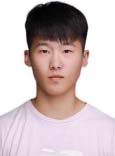 |
Mengde Lyu |
| Employment: School of Athletic Performance, Shanghai University of Sport, Shanghai, China. |
| Degree: Master |
| Research interests: Neuromuscular control; Strength and conditioning |
| E-mail: mengdelyu@sus.edu.cn |
| |
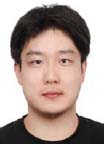 |
Zhili Chen |
| Employment: School of Athletic Performance, Shanghai University of Sport, Shanghai, China. |
| Degree: PhD |
| Research interests: Strength and conditioning |
| E-mail: 1124756883@qq.com |
| |
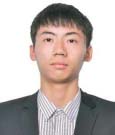 |
Renhuan Tang |
| Employment: School of Athletic Performance, Shanghai University of Sport, Shanghai, China. |
| Degree: Master |
| Research interests: Football |
| E-mail: 2221111063@sus.edu.cn |
| |
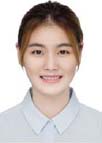 |
Ling Ding |
| Employment: School of Physical Education, Shanghai University of Sport, Shanghai, China. |
| Degree: Master |
| Research interests: Fundamental movement skill; strength and conditioning |
| E-mail: dingling0214@163.com |
| |
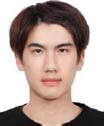 |
Shengji Deng |
| Employment: School of Athletic Performance, Shanghai University of Sport, Shanghai, China. |
| Degree: Master |
| Research interests: Strength and conditioning |
| E-mail: dengshengji618@outlook.com |
| |
 |
Roger Adams |
| Employment: Research Institute for Sport and Exercise, University of Canberra, Bruce, Australia |
| Degree: PhD |
| Research interests: Psychophysics, Sport Psychology, Health Psychology |
| E-mail: Roger.Adams@canberra.edu.au |
| |
 |
Jia Han |
| Employment: College of Rehabilitation Sciences, Shanghai University of Medicine and Health Sciences, Shanghai, China |
| Degree: PhD |
| Research interests: Behavioural Science, Physiotherapy, Sports medicine |
| E-mail: Jia.Han@canberra.edu.au |
| |
 |
Yongming Li |
| Employment: School of Athletic Performance, Shanghai University of Sport, Shanghai, China. |
| Degree: PhD |
| Research interests: Energy Contribution; Strength and Conditioning |
| E-mail: liyongming@sus.edu.cn |
| |
|
| |
| REFERENCES |
 Alba-Jiménez C., Moreno-Doutres D., Peña J. (2022) Trends Assessing Neuromuscular Fatigue in Team Sports: A Narrative Review. Sports (Basel, Switzerland) 10, 33. Crossref |
 Balsalobre-Fernández C., Glaister M., Lockey R.A. (2015) The validity and reliability of an iPhone app for measuring vertical jump performance. Journal of Sports Sciences 33, 1574-1579. Crossref |
 Bestwick-Stevenson T., Toone R., Neupert E., Edwards K., Kluzek S. (2022) Assessment of Fatigue and Recovery in Sport: Narrative Review. International Journal of Sports Medicine 43, 1151-1162. Crossref |
 Boyas S., Guével A. (2011) Neuromuscular fatigue in healthy muscle: Underlying factors and adaptation mechanisms. Annals of Physical and Rehabilitation Medicine 54, 88-108. Crossref |
 Chang L., Fu S., Li J., Wu S., Adams R., Han J., Han C. (2022a) Effects of compression running pants and treadmill running stages on knee proprioception and fatigue-related physiological responses in half-marathon runners. Frontiers in Physiology 13, 1035424. Crossref |
 Chang L., Fu S., Wu S., Witchalls J., Adams R., Waddington G., Han J. (2022b) Effects of graduated compression socks on ankle inversion proprioception of half-marathon runners at different running distances. Journal of Science and Medicine in Sport 25, 529-534. Crossref |
 Clarke A.C., Anson J.M., Pyne D.B. (2015) Neuromuscular Fatigue and Muscle Damage After a Women’s Rugby Sevens Tournament. International Journal of Sports Physiology and Performance 10, 808-814. Crossref |
 Claudino J.G., Cronin J., Mezêncio B., McMaster D.T., McGuigan M., Tricoli V., Amadio A.C., Serrão J.C. (2017) The countermovement jump to monitor neuromuscular status: A meta-analysis. Journal of Science and Medicine in Sport 20, 397-402. Crossref |
 Gandevia S.C. (2001) Spinal and Supraspinal Factors in Human Muscle Fatigue. Physiological Reviews 81, 1725-1789. Crossref |
 Gao C., Wang X., Zhang G., Huang L., Han M., Li B., Nassis G., Li Y. (2022) Comparison of Physiological and Perceptional Responses to 5-m Forward, Forward-Backward, and Lateral Shuttle Running. Frontiers in Physiology 12, 780699. Crossref |
 Gathercole R.J., Sporer B.C., Stellingwerff T., Sleivert G.G. (2015) Comparison of the Capacity of Different Jump and Sprint Field Tests to Detect Neuromuscular Fatigue. Journal of Strength and Conditioning Research 29, 2522-2531. Crossref |
 Han J., Anson J., Waddington G., Adams R. (2014) Sport Attainment and Proprioception. International Journal of Sports Science & Coaching 9, 159-170. Crossref |
 Han J., Luan L., Adams R., Witchalls J., Newman P., Tirosh O., Waddington G. (2022) Can Therapeutic Exercises Improve Proprioception in Chronic Ankle Instability? A Systematic Review and Network Meta-Analysis. Archives of Physical Medicine and Rehabilitation 103, 2232-2244. Crossref |
 Han J., Waddington G., Adams R., Anson J., Liu Y. (2016) Assessing proprioception: A critical review of methods. Journal of Sport and Health Science 5, 80-90. Crossref |
 Han J., Waddington G., Anson J., Adams R. (2015) Level of competitive success achieved by elite athletes and multi-joint proprioceptive ability. Journal of Science and Medicine in Sport 18, 77-81. Crossref |
 Herbaut A., Delannoy J. (2020) Fatigue increases ankle sprain risk in badminton players: A biomechanical study. Journal of Sports Sciences 38, 1560-1565. Crossref |
 Kovacs M.S. (2009) Movement for Tennis: The Importance of Lateral Training. Strength & Conditioning Journal 31, 77-85. Crossref |
 McKay G.D. (2001) Ankle injuries in basketball: injury rate and risk factors. British Journal of Sports Medicine 35, 103-108. Crossref |
 Miura K., Ishibashi Y., Tsuda E., Okamura Y., Otsuka H., Toh S. (2004) The effect of local and general fatigue on knee proprioception. Arthroscopy: The Journal of Arthroscopic & Related Surgery 20, 414-418. Crossref |
 Mohammadi F., Roozdar A. (2010) Effects of Fatigue Due to Contraction of Evertor Muscles on the Ankle Joint Position Sense in Male Soccer Players. The American Journal of Sports Medicine 38, 824-828. Crossref |
 Nicol C., Avela J., Komi P.V. (2006) The Stretch-Shortening Cycle. Sports Medicine 36, 977-999. Crossref |
 Otis J.C., Deland J.T., Lee S., Gordon J. (2004) Peroneus Brevis is a More Effective Evertor than Peroneus Longus. Foot & Ankle International 25, 242-246. Crossref |
 Place N., Millet G.Y. (2020) Quantification of Neuromuscular Fatigue: What Do We Do Wrong and Why?. Sports Medicine 50, 439-447. Crossref |
 Raeder C., Wiewelhove T., Westphal-Martinez M.P., Fernandez-Fernandez J., De Paula Simola R.A., Kellmann M., Meyer T., Pfeiffer M., Ferrauti A. (2016) Neuromuscular Fatigue and Physiological Responses After Five Dynamic Squat Exercise Protocols. Journal of Strength and Conditioning Research 30, 953-965. Crossref |
 Ribeiro F., Santos F., Gonçalves P., Oliveira J. (2008) Effects of volleyball match-induced fatigue on knee joint position sense. European Journal of Sport Science 8, 397-402. Crossref |
 Ribeiro F., Venâncio J., Quintas P., Oliveira J. (2011) The effect of fatigue on knee position sense is not dependent upon the muscle group fatigued: Proprioception and Muscle Fatigue. Muscle & Nerve 44, 217-220. Crossref |
 Scanlan A., Dascombe B., Reaburn P. (2011) A comparison of the activity demands of elite and sub-elite Australian men’s basketball competition. Journal of Sports Sciences 29, 1153-1160. Crossref |
 Shi X., Cao Z., Ganderton C., Tirosh O., Adams R., EI-Ansary D., Han J. (2023) Ankle proprioception in table tennis players: Expertise and sport-specific dual task effects. Journal of Science and Medicine in Sport 26, 429-433. Crossref |
 Subramanium A., Honert E.C., Cigoja S., Nigg B.M. (2021) The effects of shoe upper construction on mechanical ankle joint work during lateral shuffle movements. Journal of Sports Sciences 39, 1791-1799. Crossref |
 Suchomel T.J., Nimphius S., Stone M.H. (2016) The Importance of Muscular Strength in Athletic Performance. Sports Medicine 46, 1419-1449. Crossref |
 Taylor J.B., Wright A.A., Dischiavi S.L., Townsend M.A., Marmon A.R. (2017) Activity Demands During Multi-Directional Team Sports: A Systematic Review. Sports Medicine 47, 2533-2551. Crossref |
 Thorpe R.T., Atkinson G., Drust B., Gregson W. (2017) Monitoring Fatigue Status in Elite Team-Sport Athletes: Implications for Practice. International Journal of Sports Physiology and Performance 12, 27-34. Crossref |
 Thorpe R.T., Strudwick A.J., Buchheit M., Atkinson G., Drust B., Gregson W. (2015) Monitoring Fatigue During the In-Season Competitive Phase in Elite Soccer Players. International Journal of Sports Physiology and Performance 10, 958-964. Crossref |
 Voight M.L., Hardin J.A., Blackburn T.A., Tippett S., Canner G.C. (1996) The Effects of Muscle Fatigue on and the Relationship of Arm Dominance to Shoulder Proprioception. Journal of Orthopaedic & Sports Physical Therapy 23, 348-352. Crossref |
 Wadden K.P., Button D.C., Kibele A., Behm D.G. (2012) Neuromuscular fatigue recovery following rapid and slow stretch-shortening cycle movements. Applied Physiology, Nutrition, and Metabolism 37, 437-447. Crossref |
 Watkins C.M., Barillas S.R., Wong M.A., Archer D.C., Dobbs I.J., Lockie R.G., Coburn J.W., Tran T.T., Brown L.E. (2017) Determination of Vertical Jump as a Measure of Neuromuscular Readiness and Fatigue. Journal of Strength and Conditioning Research 31, 3305-3310. Crossref |
 Wu H. W., Chang Y.S., Arefin M.S., You Y.L., Su F.C., Lin C.F. (2022) Six-Week Remodeled Bike Pedal Training Improves Dynamic Control of Lateral Shuffling in Athletes With Functional Ankle Instability. Sports Health: A Multidisciplinary Approach 14, 348-357. Crossref |
 Yang N., Waddington G., Adams R., Han J. (2018) Translation, cultural adaption, and test-retest reliability of Chinese versions of the Edinburgh Handedness Inventory and Waterloo Footedness Questionnaire. Laterality: Asymmetries of Body, Brain and Cognition 23, 255-273. Crossref |
|
| |
|
|
|
|

